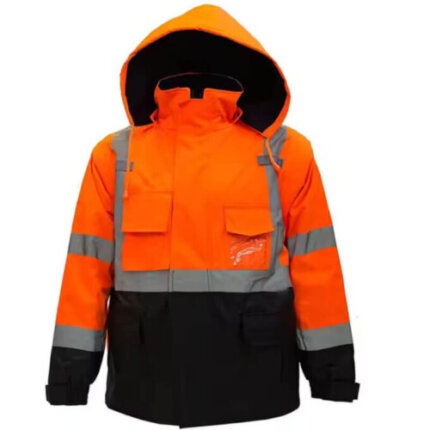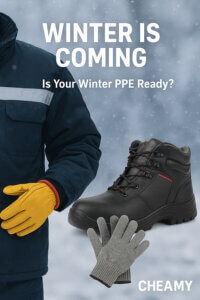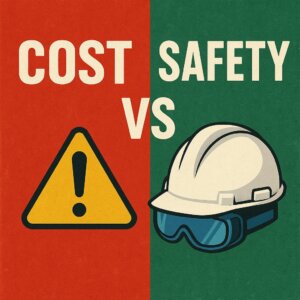Introduction
As work environments continue to evolve, personal protective equipment (PPE) plays a crucial role in ensuring the safety, comfort, and well-being of workers. Custom workwear provides tailored solutions that cater to the specific needs of each worker, whether in construction, manufacturing, or other industries. In this blog, we’ll explore the advantages of custom workwear, how it enhances safety and productivity, and why it’s worth considering for your workforce.
1. Benefits of Custom Workwear
Better Fit and Comfort
Standard workwear doesn’t always provide the best fit for every worker. Custom workwear is designed to offer a more comfortable, tailored fit, reducing discomfort and improving mobility. Workers are less distracted by clothing that is too tight or too loose, allowing them to focus on their tasks with ease.
Enhanced Safety
Custom PPE ensures that the specific safety requirements of each worker are met. Whether it’s high-visibility clothing, flame-resistant materials, or waterproof protection, tailored workwear guarantees that workers are adequately protected for their specific work environment. For instance, construction workers benefit from reinforced pants and knee protection, while workers in cold environments need insulated jackets and boots.
Brand Recognition
Custom workwear offers the opportunity to promote your brand. Adding company logos, colors, and designs not only strengthens brand identity but also boosts morale and creates a more professional image. Custom uniforms can make employees feel like an integral part of the company, fostering team unity.
Diverse Customization Options
At CHEAMYPPE, we offer a range of customization options to meet your specific needs. From fabric choices to color schemes and additional protective features, we provide tailored solutions that fit the requirements of your team and workplace.
2. Key Considerations for Custom Workwear
Material Selection
Choosing the right materials for custom workwear is essential for both safety and comfort. Whether it’s fire-resistant fabric for high-risk industries or breathable materials for warmer climates, the right fabric can make a significant difference in worker performance and safety.
Durability and Performance
Workwear needs to be durable enough to withstand tough working conditions. Whether workers are exposed to heavy machinery, chemicals, or extreme temperatures, custom workwear ensures that the gear is made to last. High-performance fabrics protect workers from hazards and reduce the need for frequent replacements.
Visibility and Reflective Features
For industries that require workers to be visible in low-light conditions (such as construction or road maintenance), custom workwear can include reflective stripes or bright colors for increased visibility. This reduces the risk of accidents and ensures that workers are seen by others in hazardous environments.
Comfort Customization
Custom workwear can be designed to enhance comfort through adjustable features like cuffs, waistbands, and ventilation. Custom fits allow workers to move freely and perform their tasks efficiently without being restricted by ill-fitting clothing.
3. How Custom Workwear Improves Workplace Productivity
Reduced Discomfort
When workers are comfortable in their workwear, they are less likely to experience fatigue, soreness, or distraction. This leads to fewer breaks and better overall performance. A comfortable fit also ensures that workers can move freely, improving both speed and precision on the job.
Increased Efficiency
Custom workwear can be designed to help workers perform their jobs more efficiently. For example, workwear with built-in pockets, tool holders, and protective padding can make tasks easier and reduce downtime. Workers who are equipped with functional, comfortable, and protective gear are more likely to stay focused and productive throughout the day.
Preventing Injuries and Downtime
In industries where physical strain and hazards are present, such as construction or manufacturing, custom workwear that fits properly and provides the necessary protection can prevent injuries. Properly fitted gloves, boots, and padded clothing help reduce the risk of accidents, ultimately reducing injury-related downtime and improving workplace safety.
4. The Custom Workwear Process
Step 1: Needs Assessment
The first step in creating custom workwear is to assess the specific needs of your workforce. What are the environmental conditions they work in? What hazards do they face on the job? By understanding these factors, you can choose the right protective features and materials for your custom workwear.
Step 2: Design and Functionality
Once the needs are clear, the next step is to design the workwear. This includes selecting fabrics, colors, reflective elements, and additional safety features. Whether it’s a custom jacket with built-in insulation or pants with reinforced knees, the design process ensures that the workwear is both functional and comfortable.
Step 3: Sizing and Fit
Custom workwear requires careful measurement to ensure a proper fit. Poorly fitting clothing can lead to discomfort, reduced mobility, and safety concerns. Taking the time to measure workers and create clothing that fits them perfectly improves both comfort and performance.
Step 4: Quality Control and Production
After the design and fit are finalized, the workwear undergoes a thorough quality control process to ensure it meets safety standards and durability requirements. Once approved, production begins, and the custom workwear is ready for use.
5. Custom Workwear for Different Industries
Construction Industry
Custom workwear in construction typically includes high-visibility jackets, flame-resistant clothing, and padded garments for protection against heavy machinery, sharp objects, and extreme temperatures. Customization ensures that workers stay safe and visible, especially in hazardous environments.
Manufacturing Industry
In manufacturing, workers often deal with machinery, chemicals, and physical labor. Custom workwear designed with durability, comfort, and safety in mind, such as reinforced gloves and durable work pants, ensures maximum protection in this demanding field.
Healthcare Industry
For healthcare workers, custom workwear such as scrubs, lab coats, and gowns is essential for hygiene and comfort. Customization allows for a perfect fit, and features like antimicrobial fabrics can improve safety and reduce the risk of contamination.
Transportation Industry
Drivers and logistics workers require custom workwear that ensures safety, visibility, and comfort. High-visibility vests, slip-resistant boots, and weather-resistant jackets help workers perform their tasks safely and efficiently, especially in outdoor or low-light conditions.
Conclusion
Custom workwear is not just about providing basic protection; it’s about tailoring the right solutions for the safety, comfort, and productivity of your workforce. Whether it’s choosing the right materials, ensuring the perfect fit, or adding specialized features for specific environments, custom PPE enhances your workers’ safety and helps them perform at their best. At CHEAMYPPE, we are committed to delivering high-quality, custom workwear that meets the specific needs of your industry.
Ready to provide your team with tailored protection and comfort? Contact us today to learn more about our custom workwear solutions and take the first step toward a safer, more productive workplace.








